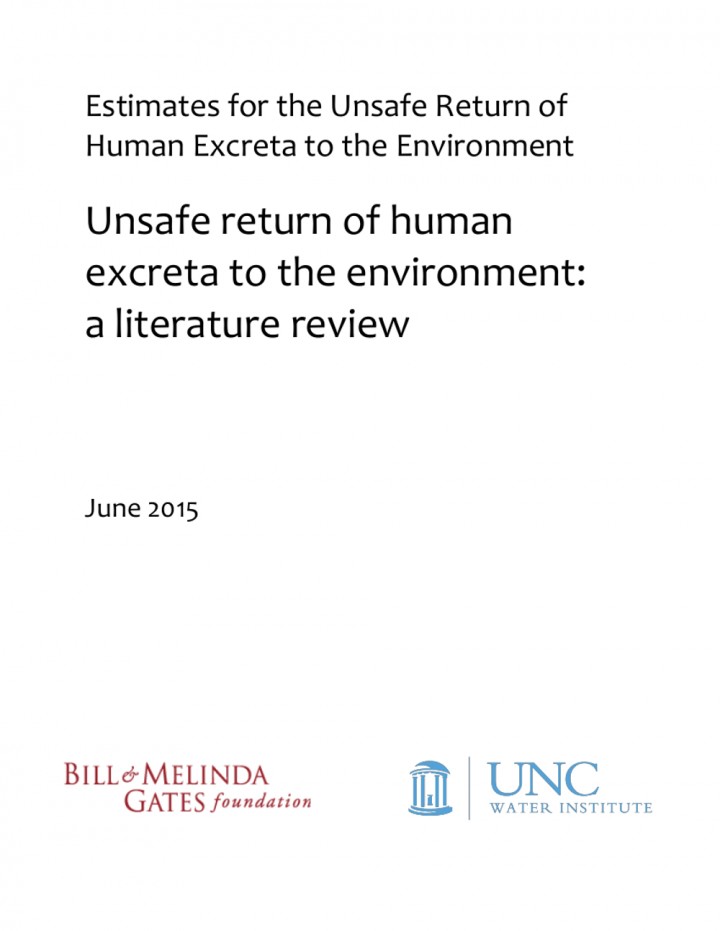
Author(s): Various authors
Published in: 2015
Pages: 0
Publisher: The Water Institute, Gillings School of Global Public Health (The University of North Carolina at Chapel Hill)
Proof of concept of estimates for the unsafe return of human excreta to the environment Various documents on results from research grant
This library entry contains background documents for a grant that Pete Kolsky and James Bartram are leading and which is funded by the Bill and Melinda Gates Foundation.
Further information is also available on the SuSanA discussion forum, see link below.
Short description of the project:
There is need to track human excreta beyond their initial deposit in toilets through to their final return to the environment, to ensure that the population is properly protected from the diseases spread by this waste.
The work of this project is intended to inform the expected Sustainable Development Goal Target to reduce the amount of human excreta unsafely returned to the environment. The âglobal scorecardâ for excreta management developed will assist governments, funding agencies and development agencies to address progress and the need for improvement more effectively, both from an improved understanding of the situation, and from the clearer insight into the global situation.
Methodology:
We will model the return of human excreta to the environment through three sanitation technologies: pit latrines, septic tanks, and sewers. Similar to shit-flow diagrams, our model will track human excreta across the entire sanitation chain, including containment, emptying, transport, treatment, disposal/reuse. However, our model will also include both solid (fecal sludge) and liquid (wastewater/effluent) streams.
Rather than completing a mass balance of waste, as is done in shit-flow diagrams, our model will incorporate pathogen die-off over time and will therefore be representative of a âhazard balanceâ. The model will also classify the location of the hazard associated with unsafe return at each step in the sanitation delivery chain according to local, community, and the greater environment.
The tool is currently being developed at the national level, using disaggregated data for urban and rural areas and modeling each setting differently. However, it is anticipated that the model could be used at the regional and local level. The output of the model will assist policy makers by identifying where the greatest hazards are within the sanitation delivery chain and where exposure occurs, at the local, community, or environmental level. Policy-makers could then use tools like Sanipath to further identify specific exposure pathways within the local and community level.
Goals:
to develop and pilot approaches for the estimation of the fraction of human excreta unsafely returned to the environment
Objectives:
- to estimate the fraction of human excreta unsafely returned to the environment, and
- to estimate where in the sanitation chain this occurs
+++++++++++
Documents available for download below:
1 - Williams, A. R.; Overbo, A. (2015): Unsafe return of human excreta to the environment: A literature review. The Water Institute at UNC, Chapel Hill, NC, USA
Keywords


